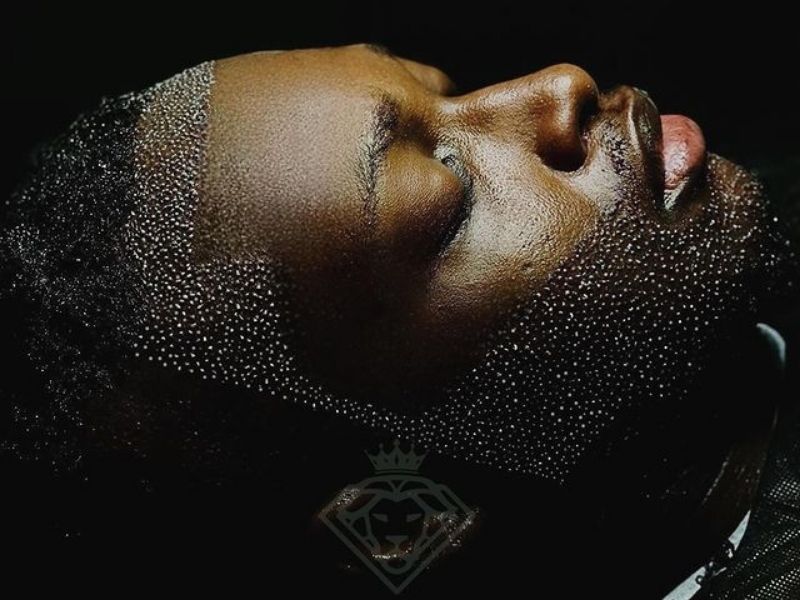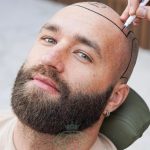How Is Beard Transplant Done?
Having a bushy and shaped beard is an aesthetically important detail for many men. However, not growing a beard or having a sparse beard due to genetic factors, hormone imbalances or scars can negatively affect self-confidence. Beard transplantation, which offers a permanent solution to this problem, is performed by transferring hair follicles to the specified areas. Today, thanks to advanced techniques such as FUE and DHI, natural and aesthetic looks can be achieved. So, how is beard transplantation performed? Here is the step-by-step beard transplantation process and things to consider!
What is Beard Transplantation? Who is it Suitable for?
Beard transplantation is a surgical procedure applied to permanently thicken beards that are sparse or never grow on the face. In this procedure, hair follicles, usually taken from areas with strong follicles such as the nape of the neck or under the chin, are transplanted into the designated beard area. Thanks to modern techniques such as FUE (Follicular Unit Extraction) and DHI (Direct Hair Implantation), natural and aesthetic results are achieved.
So, who is beard transplantation suitable for? Those who do not grow a beard due to genetic reasons, those who have sparse areas in their beard, those who have lost their beard due to scarring or burns are ideal candidates for this procedure. In addition, those who want to create a more distinctive beard style that suits their face shape can also have a beard transplant. However, having enough donor hair follicles for transplantation is one of the most important criteria for a successful result. It is recommended that people considering beard transplantation make a detailed evaluation with a specialist doctor before the procedure.
Things to Consider Before Beard Transplantation
Beard transplantation is an effective method to achieve a permanent and natural beard appearance. However, there are some important points to be considered before transplantation to get a successful result. This process is critical to accelerate recovery after transplantation and to ensure that the beard roots hold on in a healthy way.
1. Doctor Selection and Preliminary Examination
Choosing an expert and experienced doctor before having a beard transplant is the most important step for a natural and successful result. During the preliminary examination, your facial structure, the density of hair in your donor area and whether you are suitable for transplantation should be evaluated.
2. Beware of Blood Thinners and Alcohol Use
Blood thinners (aspirin etc.), alcohol and smoking should be stopped at least 7-10 days before the procedure. These substances can affect blood circulation, increase the risk of bleeding during and after transplantation, and delay the healing process.
3. Healthy Nutrition and Water Consumption is Important
Before beard transplantation, vitamin-rich foods should be consumed and sufficient amount of water should be drunk to strengthen the immune system. This will speed up tissue healing after the operation.
4. Consult Your Doctor About Hair and Beard Shaving
In some cases, the doctor may recommend shaving the beard or hair in the donor area before transplantation. However, you should definitely follow your doctor’s guidance on which areas should be shaved.
5. Wear Comfortable Clothes on the Day of Operation
The transplant procedure can usually last between 4-6 hours, so it is important to wear comfortable clothes on the day of the operation. In particular, it is recommended to wear clothes with buttons or zippers to avoid damaging the area after transplantation.
By paying attention to these steps, you can enter the beard transplantation process prepared and consciously, and you can have a healthier and faster recovery process after the operation.
Beard Transplant Stages: Step by Step Process
1. Preliminary Examination and Planning
2. Root Extraction from the Donor Area (FUE or DHI Method)
3. Canalization of the Beard Area
4. Transferring the Grafts to the Beard Area
5. Aftercare and Recovery Process
Care and Recovery After Beard Transplant
After the beard transplantation process is completed, the most important stage to be considered to get a successful result is the healing process. Certain care routines must be followed in order for the transplanted area to heal in a healthy way and for the transplanted roots to hold on. The first 48 hours is a critical period in the healing process. During this time, the transplanted area should not be touched, scratched and hard contact should be avoided. In addition, the first washing process should be performed with special lotions and shampoos as recommended by the doctor.
It is normal to see crusting, redness and slight swelling after beard transplantation. In the first 7-10 days, the scabs begin to fall off spontaneously and the transplanted area enters the healing process. During this period, smoking and alcohol consumption should be avoided because these substances may adversely affect blood circulation and delay the healing process. At the same time, it is important to keep the transplant area clean to prevent infection.
In the first few weeks after transplantation, a temporary shedding process called “shock shedding” may occur. This is completely normal and is part of the process of replacing the transplanted roots with new ones. After the shock shedding process is complete, new beards start to grow, usually from the 3rd month onwards. By the 6th month, a distinct beard appearance is formed and the final results are fully established in 8-12 months.
When Will the Results of Beard Transplantation be Visible?
Many people who have a beard transplant wonder when new beards will grow after the transplant and when the final results will be fully visible. Beard transplant results usually appear gradually between 3 and 12 months and this process may vary from person to person. The first weeks are the stage of attachment and healing of the roots in the transplanted area.
In the first 2-3 weeks after transplantation, a “shock shedding” process is experienced. At this stage, some of the transplanted beard may fall out, but this is a completely natural process. The roots remain intact under the skin and start to produce new hairs over time. Although the shock shedding process varies from person to person, it is usually completed within 4-6 weeks.
From the 3rd month onwards, it is observed that the transplanted beards start to grow again. During this period, the hairs may be thin and weak, but over time they thicken and regain their natural beard appearance. By the 6th month, the beards become prominent and most people start to see a satisfactory result in this process. However, it is necessary to wait 8-12 months for final results. At the end of this process, the transplanted beards will have a completely natural appearance and will last a lifetime.
In order to achieve faster and healthier beard transplant results, it is of great importance to follow the care instructions recommended by the doctor, pay attention to a healthy diet and keep the beard area clean regularly. Being patient in the first months and following the natural progression of the process are critical factors for a successful beard transplant result.
Beard Transplant Prices in Turkey 2025
Turkey stands out as one of the most preferred hair and beard transplant centers worldwide. Thanks to advanced techniques, experienced doctors, and affordable prices, Turkey offers an attractive option, especially for patients from abroad. In 2025, beard transplant prices vary depending on many factors, just like the hair transplant cost in Turkey.
The most important factors that determine beard transplant prices include the number of grafts to be transplanted, the technique used (FUE or DHI), the experience of the doctor, and the location of the clinic. Prices may differ in clinics in big cities such as Istanbul, Ankara, Izmir, and Antalya. However, some clinics may offer VIP services, accommodation, and transfer packages, providing a more comprehensive service for patients traveling from abroad.
Prices also depend on the quality of service offered by the clinic and the equipment used. Although more affordable options are available, it is essential to choose an experienced doctor and a reliable clinic to achieve the best and most natural results. Those considering beard or hair transplantation in Turkey should evaluate not only the cost but also the clinic’s success rate, patient reviews, and the services provided.
Even though beard and hair transplantation in Turkey is significantly more affordable compared to Europe and the U.S., there are many world-class clinics offering high-quality services. If you are searching for the best hair transplant Turkey has to offer, thorough research, comparing clinic services, and consulting with specialists is highly recommended before making a decision.
Is Itching and Crusting Normal After Beard Transplantation?
Itching and crusting after beard transplantation is a natural part of the healing process of the transplanted area. Since the hair follicles are placed one by one during the procedure, small wounds are formed on the skin and crusting occurs as the body goes through the process of healing these wounds. Crusting usually starts in the first few days after transplantation and disappears spontaneously within 7-10 days.
Itching is a common occurrence during the skin regeneration process. Itching sensation may increase especially on days 3-5. This indicates that the newly transplanted roots are starting to adapt to their places. However, it is very important not to scratch the transplantation area and avoid rough contact. Scratching can damage the roots and increase the risk of infection. Moisturizing lotions and special care products recommended by the doctor can be used to relieve itching.
To accelerate the scabbing process, the first wash after transplantation should be done as directed by the doctor and the area should be gently cleaned. In addition, consuming plenty of water can support the skin to heal faster. If itching and crusting go beyond the normal process, redness increases or signs of infection are observed, a doctor should be consulted.
What are the Risks and Side Effects of Beard Transplantation?
Although beard transplantation is a very safe procedure thanks to modern techniques, as with any surgical intervention, it may involve certain risks and side effects. Although the risks are minimized when the procedure is performed by an experienced specialist, some side effects may occur after transplantation. These side effects are usually mild and temporary, but in some cases may require additional care.
1. Swelling and Redness
After beard transplantation, slight swelling and redness may occur in the transplanted area. This is a natural result of the procedure and usually resolves spontaneously within 3-5 days. It may be helpful to apply a cold compress and sleep with the head slightly elevated to reduce swelling.
2. Itching and Crusting
As part of the healing process, crusting and itching may occur in the transplanted area. The crusts usually fall off within 7-10 days. However, since scratching the area can damage the transplanted roots, moisturizing lotions and care products recommended by the doctor should be used.
3. Shock Shedding (Temporary Hair Loss)
In the first few weeks after beard transplantation, it is a normal process for the transplanted hair to fall out. This is called “shock shedding” and new, permanent beards start to grow from the 3rd month.
4. Risk of Infection
When the transplantation procedure is not performed in sterile environments or post-transplant care is neglected, there may be a risk of infection. To prevent infection, attention should be paid to the hygiene of the area and antibiotic creams recommended by the doctor should be used.
5. Roots Growing at the Wrong Angle
After beard transplantation, in some cases, the hairs may grow in different directions from the desired angle. This may occur when the correct technique is not used during transplantation. Choosing an experienced doctor is of great importance to achieve a natural and symmetrical appearance.
6. Scarring in the Donor Area
In beard transplants performed with the FUE technique, the possibility of scarring in the donor area is very low. However, in some patients, if the donor area is cared for incorrectly, light scars may remain. It is important to follow the doctor’s care instructions during the healing process to prevent scarring.
7. Numbness and Sensitivity
After a beard transplant, some patients may experience temporary numbness or tenderness at the transplant site. This is due to the healing process of the nerve endings and usually resolves within a few weeks.



